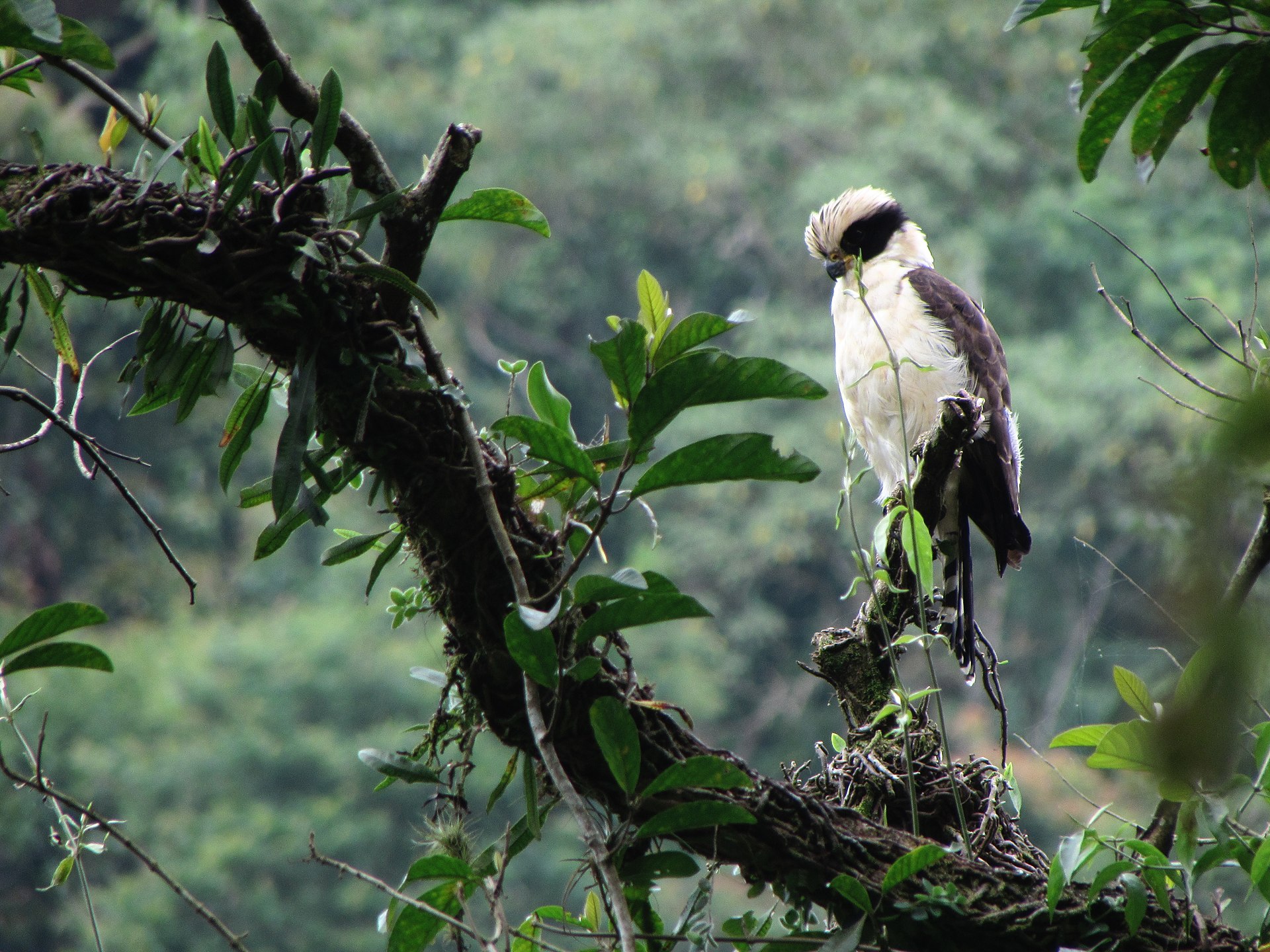
By Ken Erickson, in the Public Domain
Etymology: Reptile Hunter
First Described By: Vieillot, 1817
Classification: Dinosauromorpha, Dinosauriformes, Dracohors, Dinosauria, Saurischia, Eusaurischia, Theropoda, Neotheropoda, Averostra, Tetanurae, Orionides, Avetheropoda, Coelurosauria, Tyrannoraptora, Maniraptoromorpha, Maniraptoriformes, Maniraptora, Pennaraptora, Paraves, Eumaniraptora, Averaptora, Avialae, Euavialae, Avebrevicauda, Pygostaylia, Ornithothoraces, Euornithes, Ornithuromorpha, Ornithurae, Neornithes, Neognathae, Neoaves, Inopinaves, Telluraves, Australaves, Eufalconimorphae, Falconiformes, Falconidae, Falconinae
Status: Extant, Least Concern
Time and Place: Since 10,000 years ago, in the Holocene of the Quaternary


The Laughing Falcon is known from Central and South America, in the Tropical regions

Physical Description: The Laughing Falcon is an odd bird of prey, with distinctive markings and a fluffy head to make it stand out from others in the Falcon group! Ranging between 45 and 53 centimeters, the females usually weigh more than the males, and they have wingspans of up to 91 centimeters in length. They wings are short and round-tipped, and they have long distinctive tails. They have large heads, with fluffy tops to the heads. The tops are white, and the necks are white, but they have a dark brown patch around the eye. Their beaks are small and yellow, with black tips. They have dark-brown backs and wings, and white bellies; their tails are dark brown with white patches. They also have small feet for birds of prey.
By Allan Sobral, CC BY-SA 4.0
Diet: Laughing Falcons feed primarily on snakes, including very large venomous ones – even rattlesnakes! They will also supplement their diet with lizards, snakes, fish, and birds.
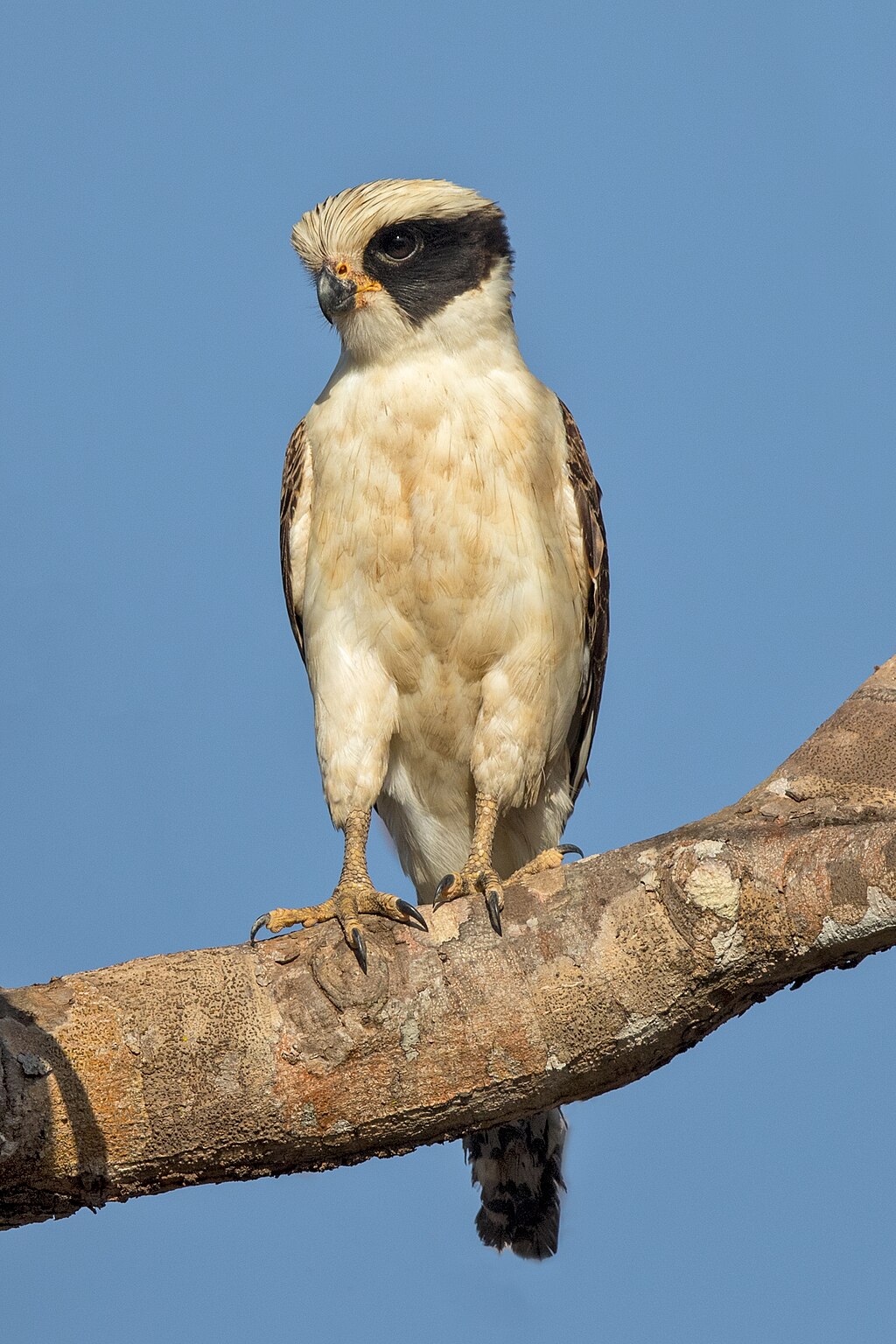
By Andreas Trepte, CC BY-SA 4.0
Behavior: This is a very slow falcon, mainly perching noticeably in trees where they will search the ground carefully for sources of food. It will also move around the branches with slow, cautious, tiny steps. They will then fly very quickly down to the prey. Other than that they fly slowly, and rarely soar through the air. They also don’t hunt other birds, so they’re quite peaceful by falcon standards. It will pounce on its prey from flight and bite it just behind the head, then carrying it back to the perch to eat in its claws like an osprey, and then tears it to pieces. This method often beheads the snakes prior to consumption, especially when given to young.
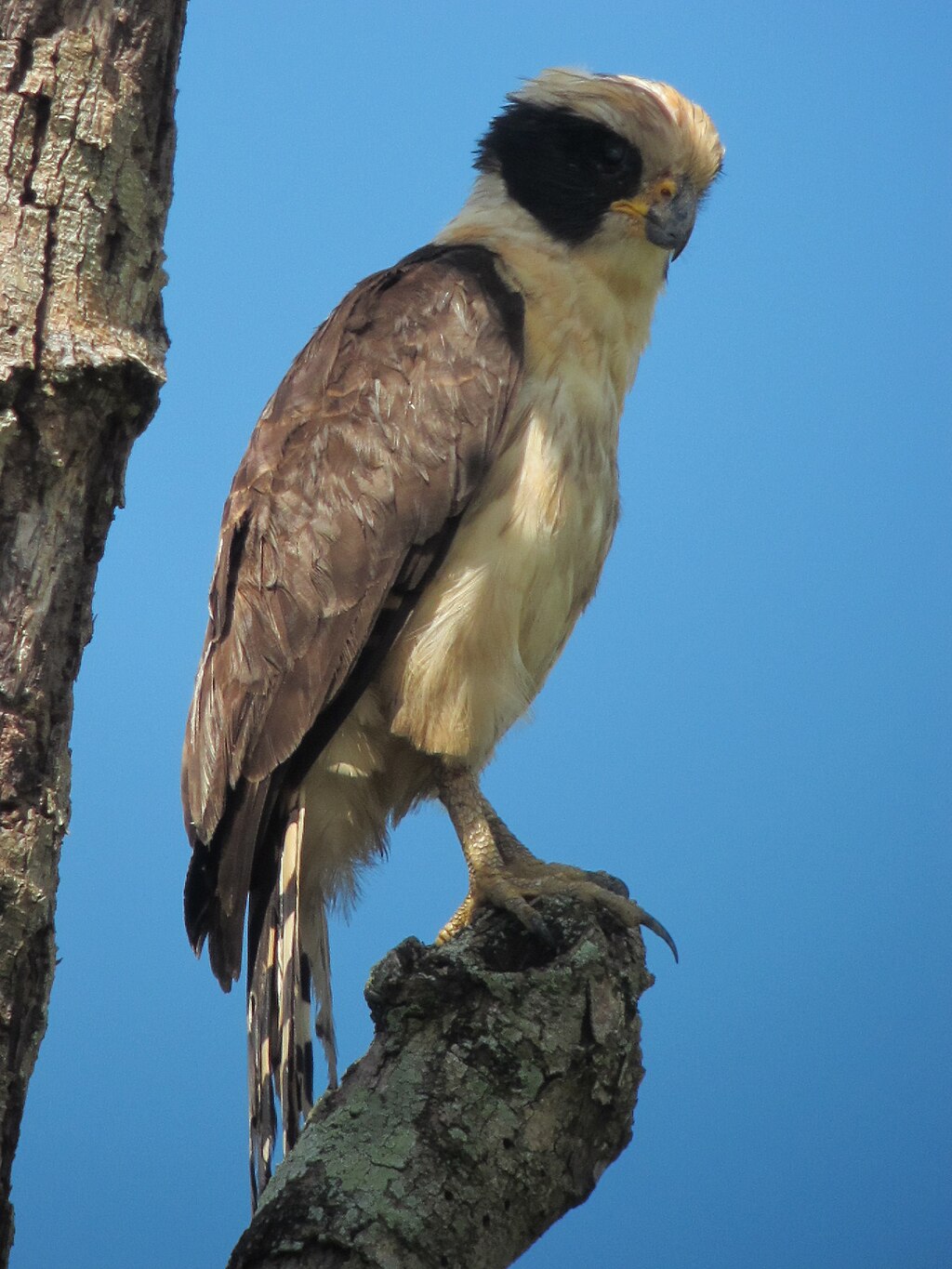
By Félix Uribe, CC BY-SA 2.0
Laughing Falcons have extremely distinctive calls, hence their names – in fact, the cries are so weird that natives to the area will call the bird evil (though, of course, it is anything but). It makes long, far-carrying “wah wah” calls that start out bubbly and increase in pitch. Mated pairs will often create loud duets together at dawn and dusk near the nest. They will make soft laughs and “Ha has” as well, and the chicks also make little laughing sounds!
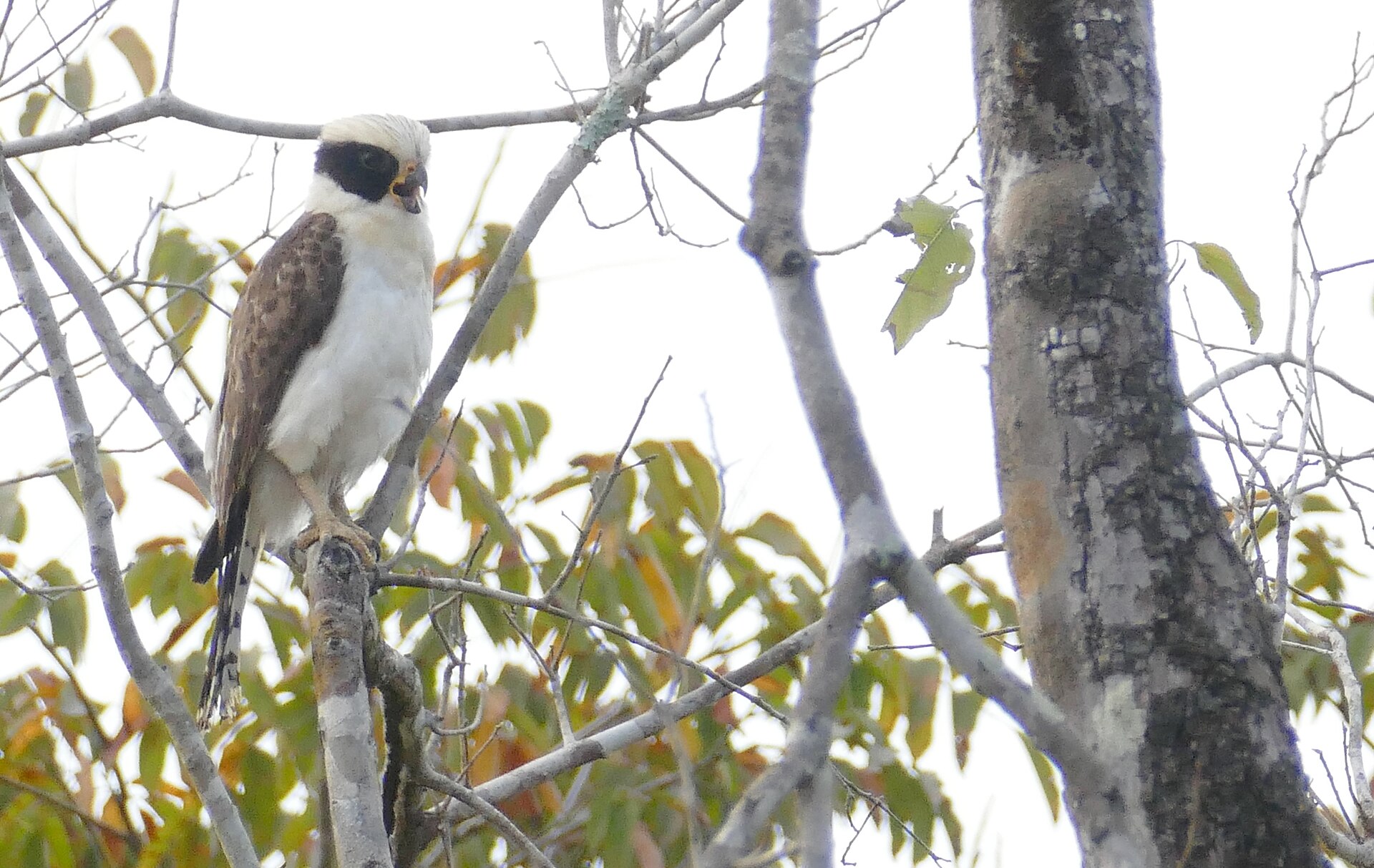
by Bernard DuPont, CC BY-SA 2.0
These birds will breed in rock crevices, tree cavities, and the abandoned nests of other birds of prey; they don’t really gather nesting material, but just use the space and a little bit of vegetation to keep the eggs nestled. They usually lay one egg, which is incubated by the female for a month and a half, while the male brings food and keeps watch. Mating and breeding can occur any time of the year, with different populations starting at different times. The chicks are small and covered in brown fluff; they’re fed by both parents, though mostly by the mother, for two months. For up to a year after leaving the nest, the young will stay with the parents and not stray too far while getting used to life in the jungle. They have very large home ranges, but do not migrate beyond that range.
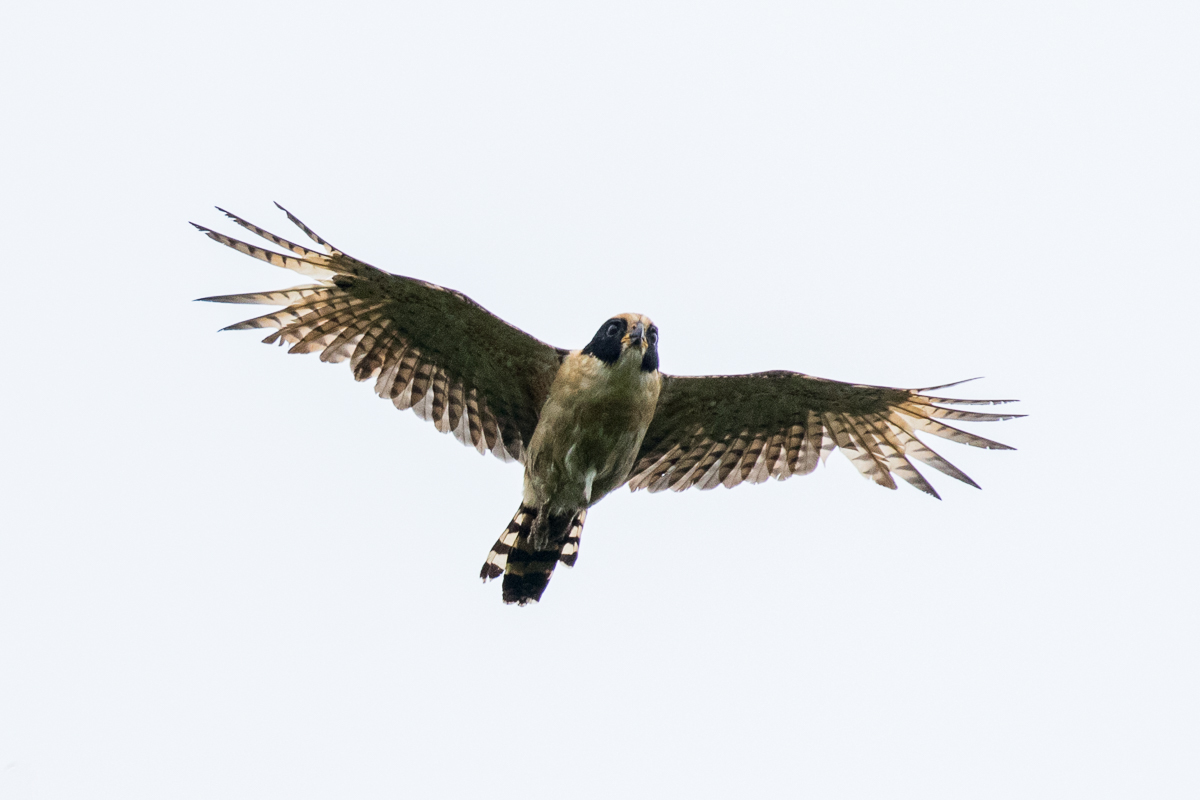
Laughing Falcon by Francesco Veronesi, CC BY-SA 2.0
Ecosystem: Laughing Falcons are mainly known in tropical and subtropical rainforests, especially along forest edges and in more disturbed second-growth forest (rather than unbroken rainforest). They are also commonly found along rivers and in swamp forests.
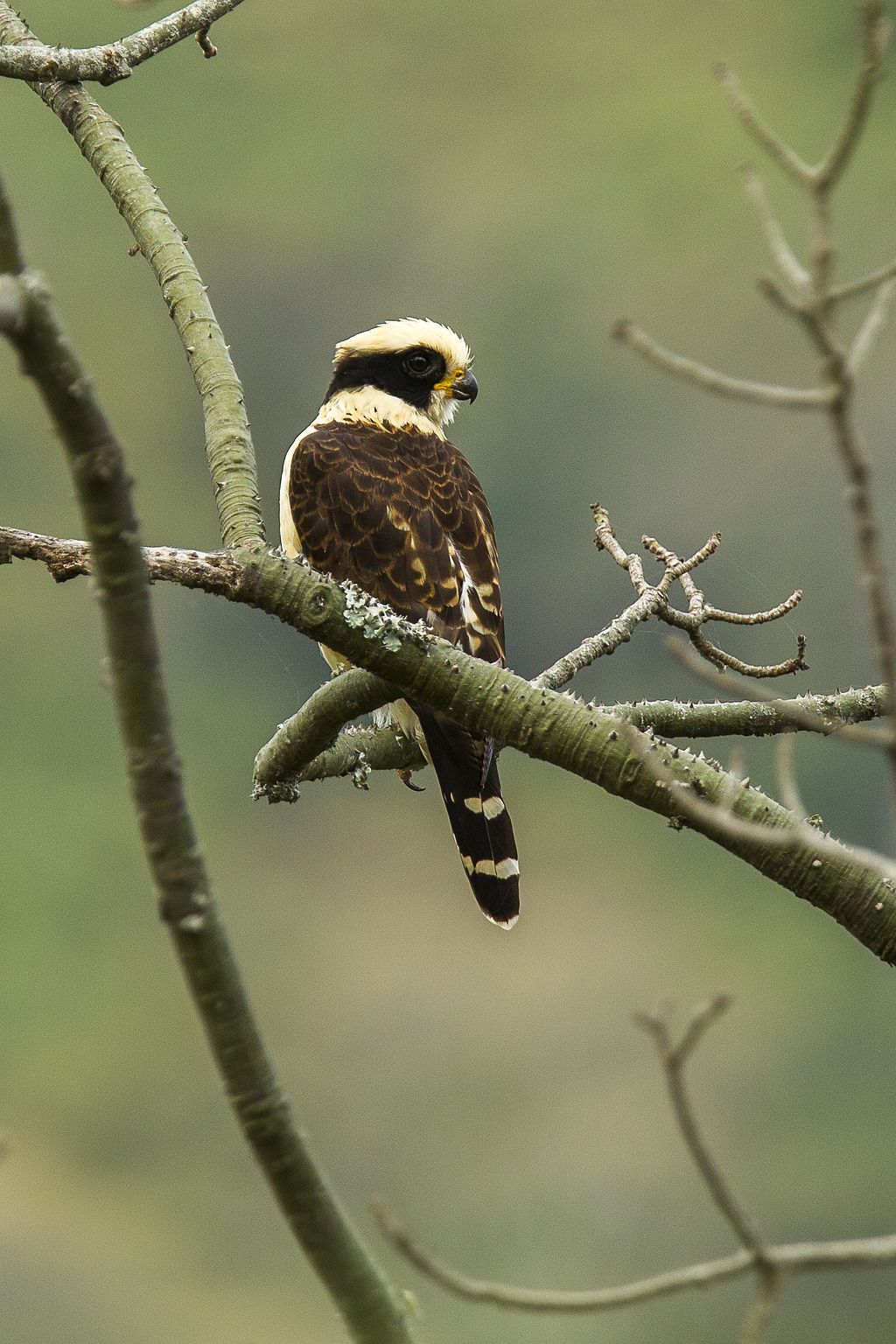
By Francesco Veronesi, CC BY-SA 2.0
Other: Laughing Falcons are not considered threatened with extinction at this time; they range from uncommon to common throughout their range (though there are some patches with more rarity) and – while some places have seen a decline, especially in response to deforestation – they seem to remain fairly common and stable in populations in most of their range.
~ By Meig Dickson
Sources under the Cut

